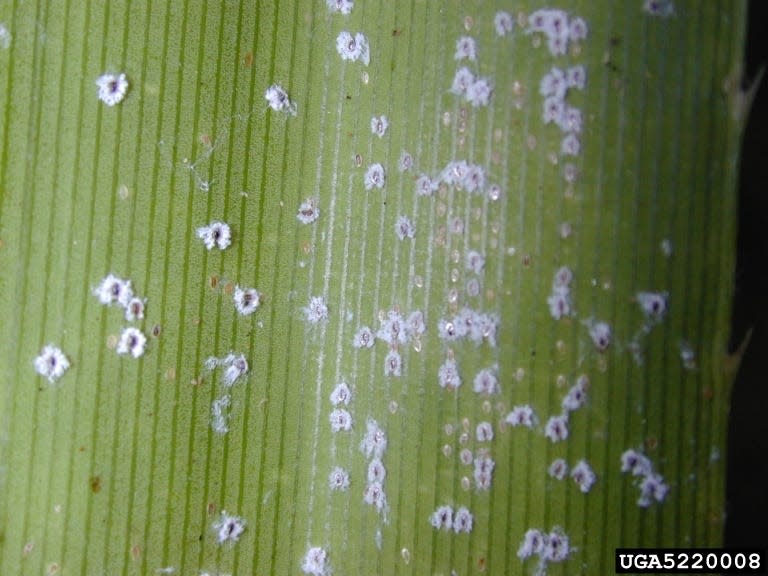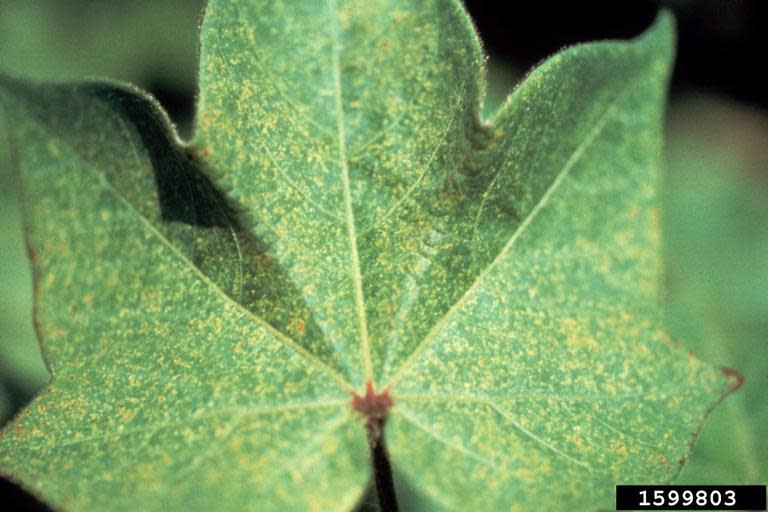Over the Garden Gate: Common houseplant pests and how to manage them
Houseplant pest damage often becomes visible in winter months because natural predators that kept insects and mites in check outdoors don’t survive the move indoors or fail to come in when plants are moved inside in fall.
Pests can also move into homes with newly purchased plants or infested gift plants. Many of these pests can cause extensive damage and spread to healthy plants nearby.
To prevent widespread infestations, consider multiple control strategies using the least-toxic methods. These options include mechanical, physical, cultural and chemical controls. Plants growing vigorously in ideal conditions are less susceptible to pests.
Careful observation is important when bringing plants in from outside or adding newly purchased plants to your indoor garden. Look under leaves and at the base of stems for anything that crawls or looks unusual. Check for damage, webbing, and honeydew, and continue to monitor plants on a regular basis. Consider isolating newly purchased plants and infected plants. Discard heavily infested plants.
Three common pests that attack indoor plants are mealybugs, scale insects and spider mites. All three remove plant sap with sucking mouthparts and can produce similar symptoms such as stunted plant growth, leaf loss, yellowing, browning or deformed leaves, color loss, wilting or mottling.
Mealybugs
Mealybugs are soft-bodied, segmented insects with piercing mouthparts that can be found on leaves, stems and roots. These slow-moving, white, cottony insects are covered with a waxy substance that extends as filaments around their bodies.

Adult females are 1/20 to 1/5 inch long and can lay hundreds of eggs that hatch within a few days. The newly hatched insects, called crawlers, are more mobile and lack wax. They are able to infest new plants at this stage. Once they begin feeding, they secrete a waxy covering and a sweet, sticky liquid called honeydew. Honeydew can lead to the growth of sooty mold, and cause infested plants to turn black.
Mealybugs are usually found in colonies on the undersides of leaves along the vein and at the base of leaf stems. Common host indoor plants include Chinese evergreen, coleus, jade, poinsettia, schefflera and palms. Plants grown indoors or in greenhouses are susceptible to infestations because mild temperatures year-round enable populations to multiply.
Scale insects
Two different groups of scale insects, soft scales and armored scales, are common pests on houseplants. Some of these disk-like insects resemble an oval shield or fish scales while others appear as colored, waxy masses.

Their color varies from yellowish brown to yellowish green with some mottled with brown spots and they are difficult to see because they blend into the bark or leaves of their host. They range in size from 1/16 to 1/2 inch and are found on stems, under leaves, and along leaf mid-veins. They occur on many plants, but indoors they frequently cause problems on figs, schefflera, English ivy and citrus.
Adult female scale insects do not have legs and are covered with a waxy coating that helps to protect them. They lay eggs under their bodies which hatch into mobile crawlers. This stage can infest new plants, either by crawling or being carried from one plant to another. Soft-scale insects excrete honeydew which can lead to sooty mold.
Spider mites
Spider mites are even smaller than the previous two insects (1/50 inch) and aren’t insects but arachnids, like spiders and ticks. They appear as tiny reddish or light green dots found on the underside of leaves. Heavy infestations produce noticeable webbing on leaves and stems.

To detect spider mites, place a white sheet of paper under leaves, tap the leaves and examine anything dislodged with a hand lens. Mites will look like dots moving around on the paper.
Spider mites can complete their life cycle in one or two weeks, depending on the temperature. They develop rapidly in hot, dry weather, and more slowly in cool, humid weather. Adult females live 2-4 weeks and lay up to five eggs daily which hatch in approximately 3 days. During their lifespan females can lay hundreds of eggs. Newly emerged nymphs and adults feed on plant sap. Common host house plants include palms, English ivy, dracaena, figs, hibiscus, Norfolk Island pine and schefflera.
Control
To control mealybugs and scale insects, use a cotton swab dipped in 70% rubbing alcohol to dab the individual insects. This dissolves the wax around the insect and kills them. Avoid getting alcohol on plant leaves to prevent injury. Use a piece of plastic or your fingernail to scrape off scale insects. A toothbrush or dry cotton swab will also dislodge them. Repeat every few weeks.
For heavy infestations, use insecticidal soap labeled for indoor plants. Follow all label directions and make certain that the plant and the insect are on the label. Insecticidal soaps and horticultural oils labeled for indoor use will only kill insects contacted at the time they are applied and will need to be repeated multiple times.
Spray plants with water or wipe leaves off with a moist sponge or paper towel to remove insect pests and accumulated honeydew. Use slow-release fertilizers without high nitrogen levels to prevent excessive plant growth, mealybug egg production, and an ideal environment for scale.
If practical, move plants outdoors so that natural predators such as ladybugs, green lacewings and parasitic wasps or flies can act as biological control.
Reduce plant stress and improve the plant's environment by watering properly, washing frequently and providing proper humidity levels. Plants growing in optimal conditions are the best protection against pest infestation.
Mary Clark is a Penn State Master Gardener in Beaver County.
This article originally appeared on Beaver County Times: Over the Garden Gate: Common houseplant pests and how to manage them

